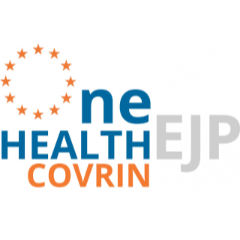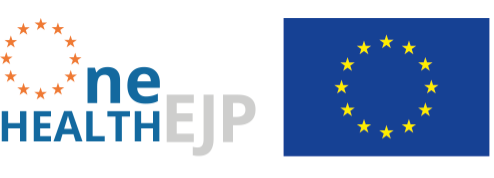Uppsala, Uppsala län, Sweden
Rua Rio Ave 1600, Carnide, Área Metropolitana de Lisboa, Portugal
Avenida da República, Oeiras e São Julião da Barra, Paço de Arcos e Caxias, Área Metropolitana de Lisboa, Portugal
Aleja Partyzantów 57, Puławy, województwo lubelskie, Poland
Ullevålsveien 68, Oslo, Oslo, Norway
Houtribweg 39, Lelystad, Flevoland, The Netherlands
Antonie van Leeuwenhoeklaan 9, De Bilt, Utrecht, The Netherlands
Bettola-Zeloforomagno, Lombardy, Italy
Teramo, Abruzzo, Italy
Viale Regina Elena, Rome, Lazio, Italy
Daphne Jackson Road, Guildford, England, United Kingdom
Addlestone, England, United Kingdom
Avenida Puerta de Hierro, Madrid, Comunidad de Madrid, Spain
Madrid, Comunidad de Madrid, Spain
Südufer 10, Greifswald, Mecklenburg-Vorpommern, Germany
Max-Dohrn-Straße 8, Berlin, Berlin, Germany
Hudcova 296, Brno, Jihovýchod, Czech Republic
Rue Juliette Wytsman - Juliette Wytsmanstraat 14, Ixelles - Elsene, Région de Bruxelles-Capitale - Brussels Hoofdstedelijk Gewest, Belgium
Spargelfeldstraße 191, Süßenbrunn, Wien, Austria
14 Rue Pierre et Marie Curie, Maisons-Alfort, Île-de-France, France

The Project #COVRIN
| Start: | 1st March 2021 |
| Duration: | 2 Years |
| Domain: | Emerging Threats |
| Keywords: | Coronavirus, SARS-CoV-2, COVID-19, Acute Respiratory Disease, preparedness, zoonoses, wildlife, animals |
| Contact: | Wim van der Poel (WBVR) & Dan Horton (UoS) |
COVRIN: One Health research integration on SARS-CoV-2 emergence, risk assessment and preparedness.
Coronavirus disease (COVID-19) is caused by severe acute respiratory syndrome coronavirus 2 (SARS-CoV-2), first identified in December 2019. COVID-19 has since spread rapidly, evolving into a pandemic with unprecedented societal and economic impact.
A main focus of the COVRIN project was to reinforce collaboration and integration of research activities on SARS-CoV-2. The aim of this project was to integrate coronavirus research activities of all project partners. The project had two main operational objectives:
- To identify the drivers for the emergence and spread of SARS-CoV-2.
- To generate data and build models for risk assessment of SARS-CoV-2.
Activities to connect with stakeholders and avoid overlaps with other projects were a key focus and the project was split into four key research activities:
- Research on detection of SARS-CoV2 in animal species and the environment.
- Research on SARS-CoV2 molecular and biological characterisation.
- SARS-CoV2 surveillance and risk assessment, focused on the animal human interface.
- Coronavirus preparedness.
Project Outputs and Outcomes
- Key outputs
- Shared molecular tests
- Shared immunoassays
- Shared cell line and animal models
- Expected implementations
- Improved reference laboratory testing procedures
- Improved risk modelling approaches
- Expected impact of the research
- Preparedness research
- Risk assessments and control research
- Societal and policy impact
- Improved risk assessment
- Improved health risks control
Project Assets
Guo, R., Wolff, C., Prada, J., & Mughini-Gras, L. (2023). When COVID-19 sits on people’s laps: A systematic review of SARS-CoV-2 infection prevalence in household dogs and cats. One Health. 16, 100497. DOI: https://doi.org/10.1016/j.onehlt.2023.100497
Moreno, A., Lelli, D., Trogu, T., Lavazza, A., Barbieri, I., Boniotti, M., Pezzoni, G., Salogni, C., Giovannini, S., Alborali, G., Bellini, S., Boldini, M., Farioli, M., Ruocco, L., Bessi, O., Maroni Ponti, A., Di Bartolo, I., De Sabato, L., Vaccari, G., Belli, G., Margutti, A., Giorgi, M. (2022). SARS-CoV-2 in a Mink Farm in Italy: Case Description, Molecular and Serological Diagnosis by Comparing Different Tests. Viruses. 14(8), 1738. DOI: https://doi.org/10.3390/v14081738
Newman, J., Thakur, N., Peacock, T.P., Bialy, D., Elreafey, A.M., Bogaardt, C., Horton, D.L., Ho, S., Kankeyan, T., Carr, C., Hoschler, K., Barclay, W.S., Amirthalingam, G., Brown, K., Charleston, B., Bailey, D. (2022). Neutralising antibody activity against SARS-CoV-2 variants, including Omicron, in an elderly cohort vaccinated with BNT162b2. Nature Microbiology. 7, 1180–1188. DOI: https://doi.org/10.1038/s41564-022-01163-3
Mendez, A., Jiménez-Clavero, M.A., Calvo, C., Pérez-Ramírez, E., Fernández-Pinero, J., Llorente, F., Sainz, T., Aguilera-Sepúlveda, P., Alcolea, S., Escolano, L., Cano, C., Novoa, I., De la Torre, A. & Iglesias, I. (2022). SARS-CoV-2 in pets of infected family groups in a severely affected region in Spain. International Journal of Infectious Diseases. 116 (Supplement), S25. DOI: https://doi.org/10.1016/j.ijid.2021.12.059
Decaro, N., Grassi, A., Lorusso, E., Patterson, E. I., Lorusso, A., Desario, C., Anderson, E. R., Vasinioti, V., Wastika, C. E., Hughes, G. L., Valleriani, F., Colitti, B., Ricci, D., Buonavoglia, D., Rosati, S., Cavaliere, N., Paltrinieri, S., Lauzi, S., Elia, G., & Buonavoglia, C. (2021). Long-term persistence of neutralizing SARS-CoV-2 antibodies in pets. Transboundary and emerging diseases. 1-4. DOI: https://doi.org/10.1111/tbed.14308
Gonzales, J. L., de Jong, M., Gerhards, N. M., & Van der Poel, W. (2021). The SARS-CoV-2 Reproduction Number R0 in Cats. Viruses. 13(12), 2480. DOI: https://doi.org/10.3390/v13122480
Hagag, I. T., Weber, S., Sadeghi, B., Groschup, M. H., & Keller, M. (2021). Impact of animal saliva on the performance of rapid antigen tests for detection of SARS-CoV-2 (wildtype and variants B.1.1.7 and B.1.351). Veterinary microbiology. 262, 109243. DOI: https://doi.org/10.1016/j.vetmic.2021.109243
Romito G., Bertaglia T., Bertaglia L., Decaro N., Uva A., Rugna G., Moreno A., Vincifori G., Dondi F., Diana A., Cipone M. (2021) Myocardial Injury Complicated by Systolic Dysfunction in a COVID-19-Positive Dog. Animals. 11(12):3506. DOI: https://doi.org/10.3390/ani11123506
, , , , , , , , , , , , , , , , , (2021). Differential susceptibility of SARS-CoV-2 in animals: Evidence of ACE2 host receptor distribution in companion animals, livestock and wildlife by immunohistochemical characterisation. Transboundary and Emerging Diseases, 1– 12. DOI: https://doi.org/10.1111/tbed.14232
Di Pasquale A., Radomski N., Mangone I., Calistri P., Lorusso A. and Cammà C. (2021). SARS-CoV-2 surveillance in Italy through phylogenomic inferences based on Hamming distances derived from pan-SNPs, -MNPs and -InDels. BMC Genomics. 22, 782. DOI: https://doi.org/10.1186/s12864-021-08112-0



